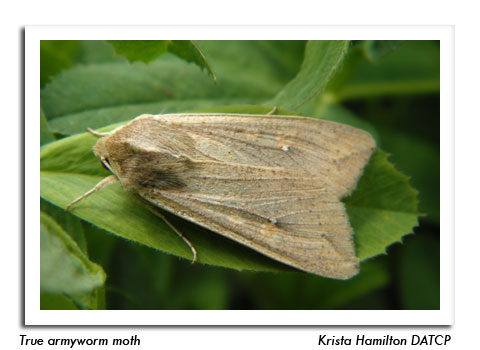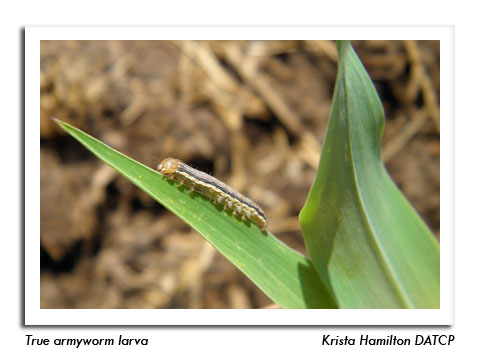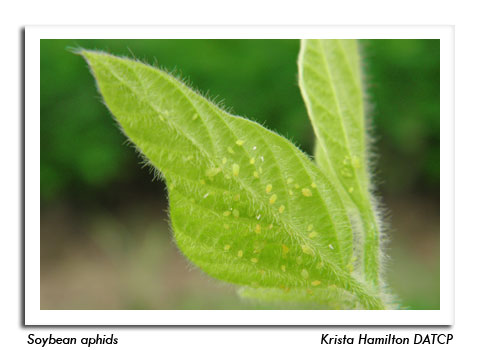
 |
|
|
Looking Ahead
Volume 59 Number 5 Date 05/29/2014 BLACK CUTWORM - Delayed planting, late weed control and a substantial spring moth migration may contribute to localized black cutworm problems in the next 2-3 weeks. The start of the primary corn cutting period is predicted for May 29 in far southern Wisconsin and June 2 in the central counties, based on degree day accumulations (modified base 50°F) since the first significant moth flight occurred on May 1. Close inspection of corn (including Bt hybrids) for evidence of cutworm feeding is recommended from emergence until the V-5 stage. TRUE ARMYWORM - Larvae were collected in low numbers from alfalfa in Dane and Monroe counties this week. The ¼-½ inch caterpillars are the offspring of migrants that arrived earlier this month. Black light traps also registered minor moth flights from May 22-28, indicating growers should anticipate more larvae appearing in corn and wheat fields next month. POTATO LEAFHOPPER - Migrants are distributed in low numbers across the southern half of the state. The average count in the past week was four leafhoppers per 100 sweeps, with a high count of 12 per 100 sweeps noted near East Troy in Walworth County. Nymphs may begin appearing in sweep nets by the second week of June if warm weather continues. EUROPEAN CORN BORER - Degree day accumulations in portions of southern Wisconsin have surpassed 374 (modified base 50°F) and conditions are now suitable for moth emergence. Black light traps should capture the first moths of the season next week, although the majority of first brood moths are unlikely to emerge before mid-June. SOYBEAN APHID - Colonization of the earliest emerging soybeans could occur next week. Reports indicate egg hatch on buckthorn has been under way for several weeks and the spring dispersal of winged aphids is expected to start as soon as soybean plants are available. -- Krista Hamilton, DATCP Entomologist 





|
|
|